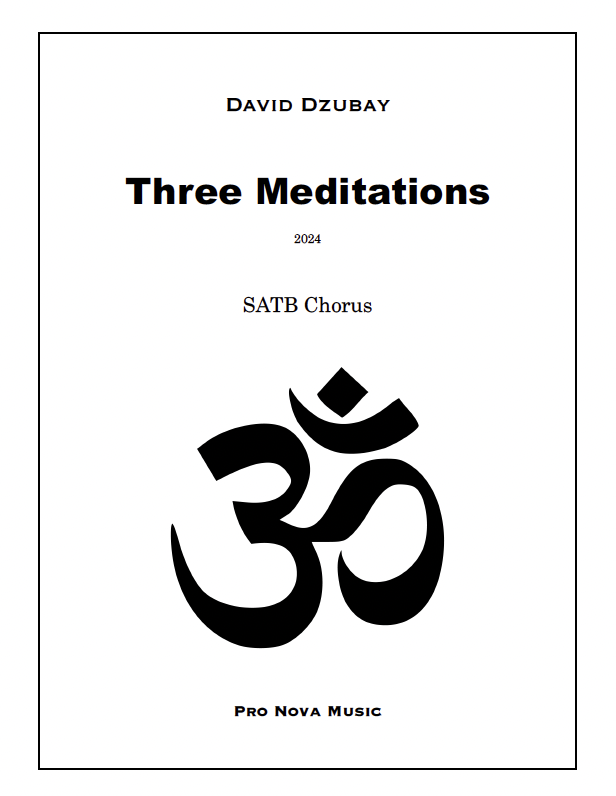Three Meditations
for SATB chorus
(2024)
1. AUM
2. balance
3. breath
duration: 13 minutes
Premiere:
NOTUS; Dominick DiOrio, conductor
IU Auer Hall; March 11, 2025
Premiere recording:
Perusal Score:
Program Note:
These three meditative choral movements are settings of ancient Hindu mantras practiced worldwide.
AUM (or Om) is often called the sound of the universe and consists of four elements—a (as in father), u (as in moon), m, and silence. In Sanskrit, a followed by u combines to form a long o sound. Many cultures incorporate these sounds into significant words, such as Amen or Shalom. Chanting AUM involves very gradually changing the sound from a to u to m, guiding vibrations from the diaphragm through the chest and into the head.
Namah Shivaya is known as the Panchakshara Mantra, or five-syllable mantra, often preceded by Om. Each syllable represents one of the five elements: Na (earth), mah (water), Shi (fire), va (air), and ya (space). Namah means "to bow," while Shivaya refers to Shiva—the inner, higher, or cosmic self. These five elements are the fundamental building blocks of all creation, including the human body, and Shiva is regarded as their master. Repeating this mantra is believed to create vibrations that resonate with the universe’s energy, bringing about a sense of peace and harmony.
Soham (pronounced sohum) translates to "I am He/She/That" and mirrors the natural rhythm and sound of one’s breath—so on inhalation and hum on exhalation. The hamsa (humsa) mantra poses the question, "Who am I?"
Three Meditations progresses from the elemental “sound of the universe” to an organic, canonic unfolding of the five-syllable mantra that grows and recedes in a balanced palindrome, to the final, deeply personal reflection: Who am I? I am That.
David Dzubay, April 2024








